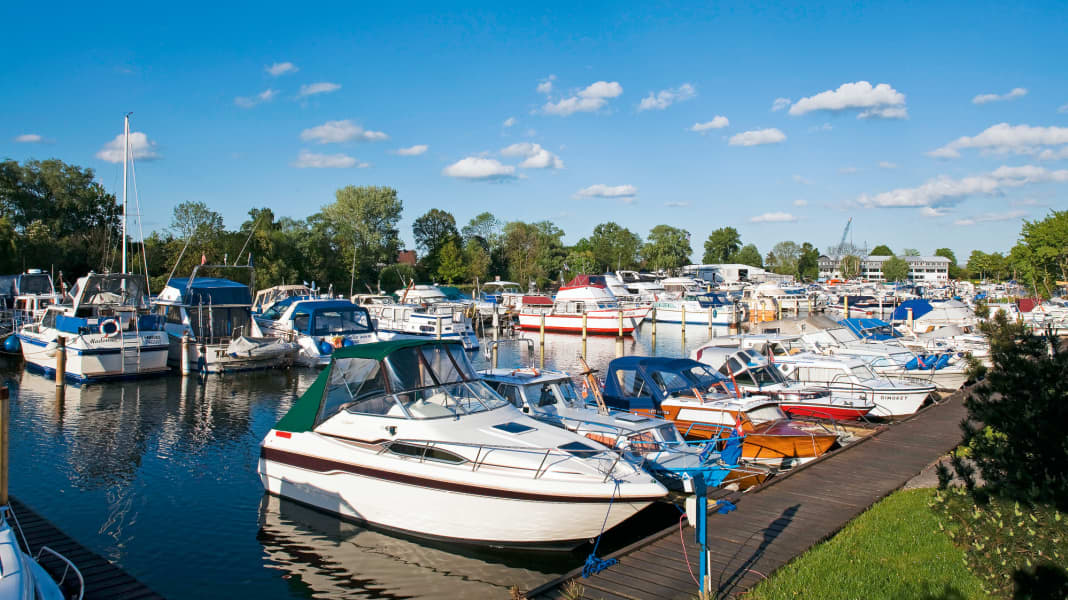
A clever business administration professor once said that all business economists who buy a new car should have their diploma taken away. His thesis, backed up with concrete figures, was that there are few things more uneconomical than buying a new car, which loses a huge amount of value in a very short space of time. A car usually can't swim, that's true, but we also encounter this phenomenon in "boat life".
The price is one of the most important reasons for choosing a second-hand boat. What's more, used boats are often sold with a wealth of accessories which - when bought new - are not available for "a penny a penny". The fact that the engine has a few too many or too few horsepower and the patterns of the upholstery and curtains are from the "Gelsenkirchen Baroque" period is easier to overlook with an inexpensive second-hand boat than with a new one. It is also important that you don't have to wait long for your new second-hand boat, but can ideally "take it with you" straight away.
Advantages and disadvantages of used boats
- A used boat is noticeably cheaper than a new boat. Accordingly, it may be one size larger.
- There are no delivery deadlines, and the new owner usually takes over the boat as soon as payment is received.
- The boats are often already well equipped and the coveted berth may also be part of the used boat.
- You can have a new boat fitted out and equipped according to your own ideas right from the start, at least in part.
- The feeling of being "the first" to go on a trip with the new boat is also very important for some owners.
- Defects in new boats must be rectified by the dealer. When buying a used boat from a private individual, the entire risk lies with the buyer.
How to find the right boat
Before you start shopping, you should know which type of boat meets your boating requirements. If you want to travel with your boat on the road, it should be easy to trailer. This means that if the boat and trailer together are heavier than 2 tonnes, you will not be able to travel without a strong tow vehicle (off-road vehicle, small truck). If the boat is too wide (more than 2.55 metres), a special permit is required. Open sports boats, which are ideal for excursions, water skiing, swimming and fishing trips on inland waterways and near the coast, certainly do not need such a licence. Even though they are called "day cruisers", two people can stay overnight on their "covered colleagues", although the level of comfort is rather modest. You are more likely to find this on small cabin cruisers with a mini-pantry and toilet. However, this type of boat does not usually offer headroom, which is usually only available on boats over 7 metres in length.
The right boat for the area
From a length of 7 metres at the latest, there is a large selection of displacement and semi-planing boats in addition to the sporty gliders. If you want to make the right choice here too (and who doesn't?), you need to know your cruising area. If canals and lakes are predominantly on the itinerary, you don't need a fast glider, but are better off with a cosy displacement glider. Why? At slow speeds - and these are the only speeds permitted in these areas - gliders are usually not nearly as stable as displacement boats. This is very different on rivers such as the Rhine. Due to the strong current, displacement boats with small engines and low hull speeds have problems keeping up. Semi-gliders and gliders have a much easier time of it. All three types of boat can be found at sea, although gliders and semi-gliders have the advantage of being able to avoid bad weather more quickly. However, once it gets really rough, gliding is quickly over, unless you want to ruin the boat (and your back).
Once you have found the type of boat you want, it is often your wallet that decides the size of the boat. Now the search can begin. You should also be prepared for longer journeys, as the really interesting boats are often not in the marina or at the dealer around the corner. Remember: Only when you have seen several boats can you really compare - and bargain.
This article is part of the Used boat purchase special. All contents:
- Buying a used boat: The key to success - How to do it right!
- The advantages and disadvantages of used boats
- How to find the right boat
- Typology - The most important types of motorboat
- Boat exchanges: Your guide through the online jungle
- You should look out for these weak points
- Checklists for the test drive and inspection
- How to avoid traps in the purchase contract
- What new owners need to know
- You need these insurances for your boat

